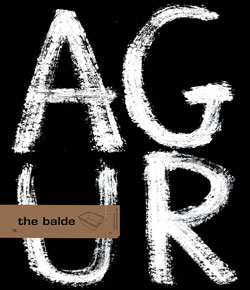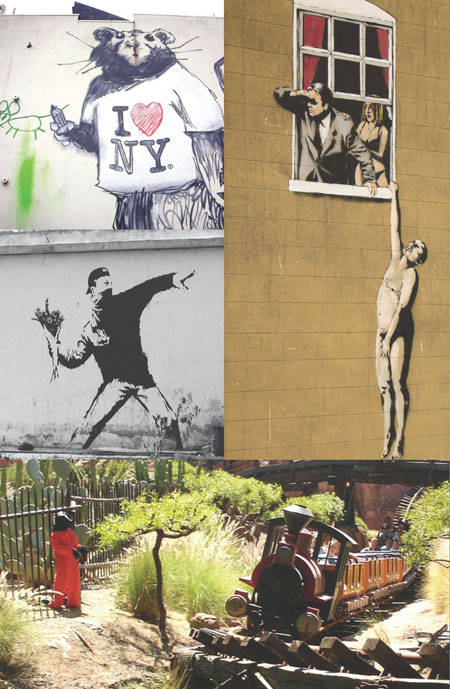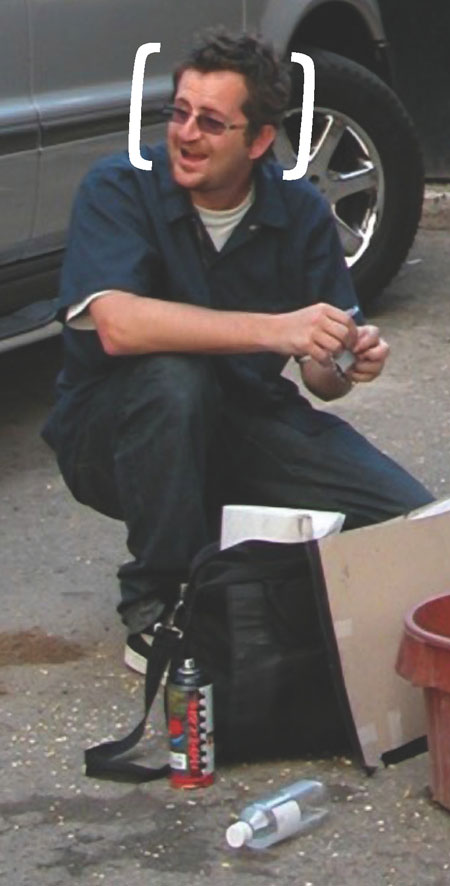(mis)understanding Bansky / (un) masking bansky
At Donostia's Zinemaldia we had the chance to see a film made by the best known street artist of the last few years. Rather than talking about the film itself, we want to reflect on the ideas left behind by the film. Bansky isn't one of those artists who wants to win everyone's admiration without upsetting anyone. So he has enthusiastic followers and detractors. Thanks to his film "Exit through the gift shop" we've been able to get to know the artist's character and way of working a bit better ... or maybe not. The French Los Angeles resident Thierry Guetta lit the fuse. Guetta (as far as we know, the only connection he has with the famous DJ of the same name is that they're both rich) bought himself a video camera and, from that moment onwards, started to film whatever came in front of him, without any specific intentions. Until he came across street art. And then, with greater enthusiasm than for any other task, he started filming the works of the States' most important graffiti artists. He met up with lots of graffiti and street artists (Obey/Shepard Fairey, Space Invader...) and managed to interview them, with only one exception: Bansky.
Guetta, a persistent man (he tells us he had no other obligations), finally managed to meet up with Bansky. They filmed lots of hours of footage, but Bansky realises that it's more attractive to talk about Guetta's live than it is to talk about his own. So they turned the story-line around and Bansky became the director and Guetta the subject. Everything we've said so far was explained in the film's promotional material and in the specialised press. We don't know how much is true and how much is false. Because it could be another example of this street artist's agent's promotional skills. We don't know what's true and what isn't ... That's probably the most attractive thing about the film. We're offered a new, daring point of view about the world of art in the film Exit through the gift shop, which is packed with fine irony, intelligence and dark humour.
He only gives two interviews in the film, both given via his agent, and it's precisely this lack of promotion that creates this most successful promotion campaign. We also have to take into account the reception it's had at the Sundance, Berlin, Sydney and Diagnostic film festivals. People who aren't Bansky fans have also admitted that the film's worth seeing. It's highly entertaining and original. There are many unanswered questions, and a continual tug of war between fiction and non-fiction, and this is a large part of the film's interest. It isn't a closed film. As we say, you don't know to what extent the characters are real and to what extent they're playing parts. Bansky doesn't want to move the scales in that difficult balance in any particular direction, and he takes all the doubts out to their further extremes.
Spoiler
Those of you who want to enjoy Bansky mystery should not look at the next page.
Robin Gunningham. Apparently this is the real name of the Bristolian behind the name Bansky. His agent doesn't want to say anything about this information but, apparently, this is the man who appears, amongst others, in the life-size sculpture of the Guantanamo tortures at Disneyland, and he's the man who hung 100 of his own works of art at Bristol Museum, and he's the one who painted the wall the Israelis are building ... Bansky has changed and painted lots of spaces with his language of images and denunciation. As we've said, this iconic street artist also has his enemies. "Many people say I've sold myself and I've gone commercial. They're right, I live off my art and I don't see anything ugly in that. I don't have any trouble getting to sleep at night. I sleep well because I'm an alcoholic.¨ We've taken Bansky's mask off. But we still have a doubt. Is Robin Gunningham Bansky, or is that what Bansky himself wants us to believe? One way or another, we always have the feeling we've fallen into one of Bansky's traps.
Guetta, a persistent man (he tells us he had no other obligations), finally managed to meet up with Bansky. They filmed lots of hours of footage, but Bansky realises that it's more attractive to talk about Guetta's live than it is to talk about his own. So they turned the story-line around and Bansky became the director and Guetta the subject. Everything we've said so far was explained in the film's promotional material and in the specialised press. We don't know how much is true and how much is false. Because it could be another example of this street artist's agent's promotional skills. We don't know what's true and what isn't ... That's probably the most attractive thing about the film. We're offered a new, daring point of view about the world of art in the film Exit through the gift shop, which is packed with fine irony, intelligence and dark humour.
He only gives two interviews in the film, both given via his agent, and it's precisely this lack of promotion that creates this most successful promotion campaign. We also have to take into account the reception it's had at the Sundance, Berlin, Sydney and Diagnostic film festivals. People who aren't Bansky fans have also admitted that the film's worth seeing. It's highly entertaining and original. There are many unanswered questions, and a continual tug of war between fiction and non-fiction, and this is a large part of the film's interest. It isn't a closed film. As we say, you don't know to what extent the characters are real and to what extent they're playing parts. Bansky doesn't want to move the scales in that difficult balance in any particular direction, and he takes all the doubts out to their further extremes.
Spoiler
Those of you who want to enjoy Bansky mystery should not look at the next page.
Robin Gunningham. Apparently this is the real name of the Bristolian behind the name Bansky. His agent doesn't want to say anything about this information but, apparently, this is the man who appears, amongst others, in the life-size sculpture of the Guantanamo tortures at Disneyland, and he's the man who hung 100 of his own works of art at Bristol Museum, and he's the one who painted the wall the Israelis are building ... Bansky has changed and painted lots of spaces with his language of images and denunciation. As we've said, this iconic street artist also has his enemies. "Many people say I've sold myself and I've gone commercial. They're right, I live off my art and I don't see anything ugly in that. I don't have any trouble getting to sleep at night. I sleep well because I'm an alcoholic.¨ We've taken Bansky's mask off. But we still have a doubt. Is Robin Gunningham Bansky, or is that what Bansky himself wants us to believe? One way or another, we always have the feeling we've fallen into one of Bansky's traps.




